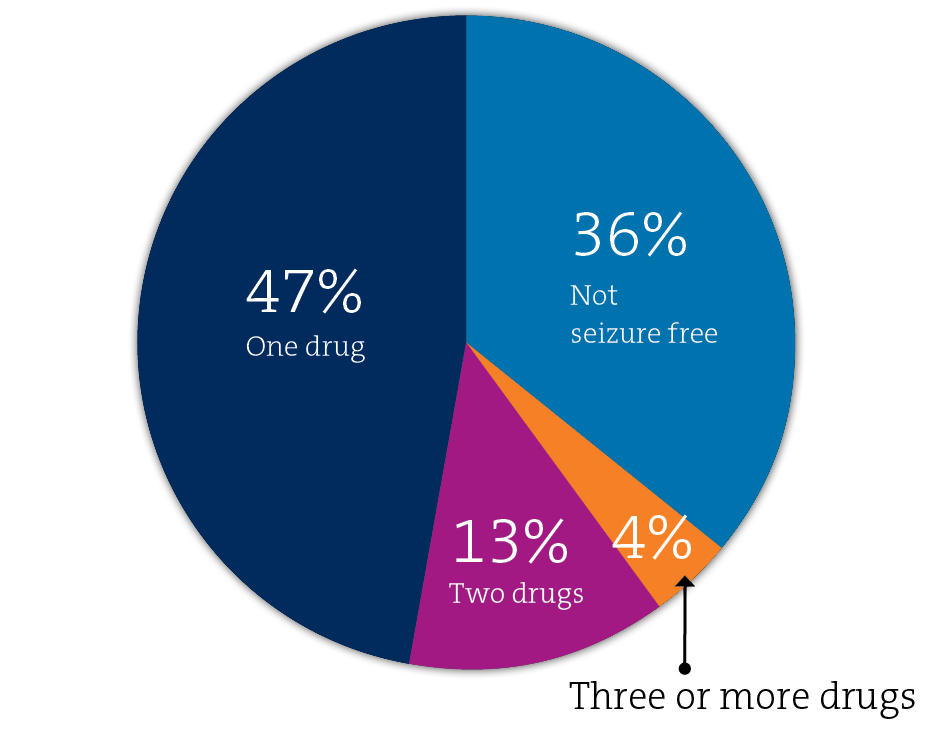Treatments and Technology
We’re transforming care with leading-edge treatments.
At OhioHealth Riverside Methodist Hospital, we’re recognized as a Level 4 Epilepsy Center by the National Association of Epilepsy Centers. This means we provide the highest level medical and surgical evaluation and treatment for patients with complex epilepsy.
Full Spectrum of Care
Your course of treatment starts with a consultation with an epilepsy specialist, and may include EEG testing. We provide both inpatient and outpatient electroencephalography (EEG) testing, which is used to record electrical brain activity. EEG services are available at several OhioHealth care sites. Our specialized EEG hospital rooms are connected to a central control room in our Epilepsy Monitoring Unit, where EEG technicians and epilepsy specialists observe brain wave activity in real time to diagnose patients and determine their treatment plans.
- MONITORING UNIT
-
At OhioHealth Neuroscience Center at Riverside Methodist Hospital, we offer a state-of-the-art inpatient Epilepsy Monitoring Unit (EMU) to monitor brain activity and determine the cause of recurrent unprovoked seizures. The nationally certified unit is staffed 24/7 by skilled EEG technicians.
Our epileptologists use this specialized eight-bed inpatient unit to:- Determine whether the episodes a patient is having are seizures and, if so, whether they are epileptic seizures or psychogenic non-epileptic spells
- Determine rapid medication adjustments in a controlled environment
- Evaluate seizure frequency
- Evaluate subclinical seizure activity
- Determine whether a patient is a candidate for epilepsy surgery
For more information, please talk with your physician or call the Epilepsy Monitoring Unit at (614) 788.6656 with your questions.
- Additional diagnostic tests
-
Additional diagnostic tests we use to evaluate surgical candidates:
- Neuroimaging (Head CT, 1.5 and 3T MRI interpreted by dedicated neuroradiologists)
- Interictal PET scan
- Ictal SPECT scan
- Neuropsychiatric testing
- Functional MRI + WADA testing
- MEDICATION MANAGEMENT
-
The first treatment option for most epileptic patients is medication. Our epilepsy specialists will determine the appropriate anti-seizure medications for you, monitor your response to your medications and help you manage any side affects you may experience.
- SURGICAL SERVICES
-
Research shows that more than 30 percent of patients with epilepsy continue to have seizures despite medication. At this point, surgery becomes a consideration. OhioHealth offers the following surgical services:
Invasive monitoring enables epileptologists to better localize where seizures start in the brain
Stereotactic EEG (SEEG) — a leading-edge minimally invasive procedure that uses 3D imaging and robotic guidance to implant multiple electrodes through small burr holes. The complication rates associated with SEEG are much lower than those associated with intracranial monitoring using subdural grids. Additionally, the rate of seizure freedom may be higher — especially in frontal lobe epilepsy series. OhioHealth Riverside Methodist Hospital is among the leading centers in the United States offering SEEG.We also implant depth electrodes and electrode grids
Resection: If the team of doctors is confident you will not have deficits after surgery, such as weakness or trouble talking, they will consider surgically removing the part of your brain that is causing seizures.
Neuromodulation:
- Responsive neurostimulation (RNS):
If your seizures are coming from two different regions in your brain, or an eloquent area (an area that cannot be destroyed because it is too important), RNS may be an option. During this procedure, a small device is anchored in your skull and wires are inserted into the area that’s causing seizures. The wires continuously record brain waves and deliver electrical current at the onset of a seizure, often stopping the seizure before you are even aware it is happening.
- Deep brain stimulation (DBS):
If your seizures originate from a large section on one or both sides of the brain, an electrode could be inserted into the thalamus – a deep structure in the brain that is involved in seizure generation – to deliver a continuous electrical current that helps reduce seizures.
- Vagus nerve stimulation — VNS Therapy®
A “pacemaker for the brain” that sends mild pulses of electrical energy through the vagus nerve to the brain.
- Laser Ablation — Visualase®
Advanced MRI-guided laser ablation technology Visualase® is a new minimally invasive option when medications are no longer effective. The technology, which enables our neurosurgeons to precisely target and destroy problematic brain tissue that causes epileptic seizures through a burr hole in the skull, is reducing hospital stays while defining a new standard of care for patients. If your seizures are starting in a very important part of your brain, your doctors may consider this option.
- Responsive neurostimulation (RNS):
After two attempts of medication, surgery may be a viable option.
Patients who have many seizures before therapy or who have an inadequate response to initial treatment with anti-epileptic drugs are likely to have refractory epilepsy, also referred to as drug-resistant epilepsy. When drugs prove ineffective treating seizures, surgery may be a viable treatment option.
Percent of Seizure-free Patients
Success of anti-epileptic drug regimens in 470 patients with previously untreated epilepsy*
- 47% response to first drug
- 13% response to second drug
- 4% response to third drug or multiple drugs
*Kwan P, Brodie MJ. NEJM February 3, 2000; Vol. 342 No. 5
